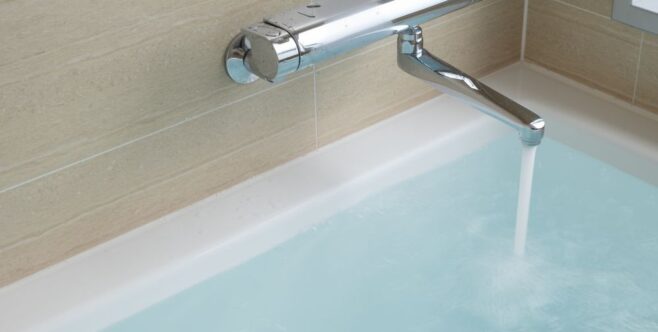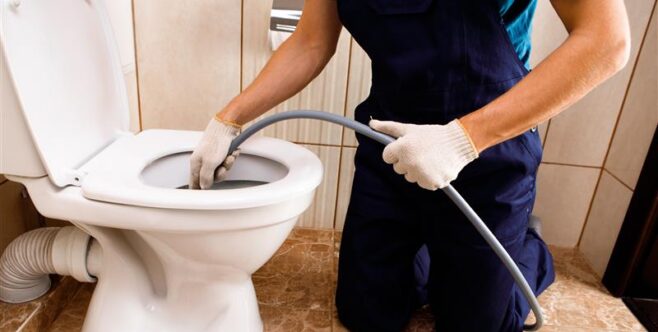What Are the Common Signs of Tree Roots in Your Pipes?
If you have big and beautiful trees in your garden, you could be facing more than you bargained for. As well as providing dappled shade and undeniable aesthetics, your trees could be digging deep into your garden and damaging your pipes!

You see, tree roots are naturally drawn to water, and the water in your pipes are the perfect meal for your thirsty flora. This is especially the case if your trees have a particularly invasive root system.
Once your tree roots enter your pipes, they will continue to grow, slowing the flow of water, eventually resulting in completely blocked pipes and drains. Invasive tree roots can also lead to significant pipe damage.
So, how do you know if your tree roots are secretly plotting against you? Read on for more information about identifying tree roots in your pipes and drains and what you can do next. If you need help with blocked drains in Melbourne give us a call.
How Can You Tell If You Have Tree Roots in Your Pipes?
The idea of tree roots in your drains might sound bizarre, but the plumbing problem they create is actually fairly common. Invasive tree roots lead to blocked drains and all the signs and symptoms that come with them. You might find yourself calling a plumber in Mount Waverley or your local area if you notice these signs of blocked drains:
- Slow draining sinks
- Water pooling at the bottom of the shower
- Regular toilet blockages
- Noisy and smelly drains
- Water pressure problems
- Water overflowing out of your drains
- Sudden increases in your water bill
A blocked drain can be caused by so many things, from jewellery that drops down the sink to a build-up of residue over time. However, there are certain signs you can look for that more strongly suggest that you’re dealing with invasive roots. These include:
- Sunken or elevated patches in your yard
- Small areas of grass that are growing rapidly and are extra green and lush
- Wet and muddy patches in specific areas of your garden
- Other signs of invasive tree roots, such as buckling footpaths or damage to your foundations or retaining walls
If your property suffers from a combination of blocked drain symptoms and invasive tree root symptoms, then you almost certainly have tree roots in your pipes!
Whether you need a local plumber in Reservoir or a professional plumbing team in Mulgrave, make sure you partner with a plumber that specialises in blockages. Blocked drain plumbers will have the expertise and specialist equipment to assist you with invasive tree roots in your pipes.

What Happens When Roots Get in Your Pipes?
The problem of invasive tree roots comes down to two things – nature and survival.
Trees use their roots for stability and to seek out water. Your tree’s root system might be narrow or shallow or wide and deep. Trees with wide and deep root systems are often considered invasive because they will travel far and wide in search of water.
Luckily for your tree roots (and unluckily for you), there is plenty of water flowing through your pipes. All your tree needs to do is find the smallest gap or crack in your pipes and the finest tree root can slip through the gap in search of water.
Once the tree root is inside your pipe, it can continually grow, reducing the width of the pipe and affecting your water pressure and performance. Eventually, your thirsty tree root can create a full-blown blockage that stops water in its tracks and damages your pipes.
How Do You Detect and Remove Tree Roots in Pipes?
If you’re pretty sure you have tree roots in your pipes, it’s time to be 100% sure. Call your local plumber and ask them to assess the situation. Whether you need a trusted plumber in Preston or a blocked drain plumber in Nunawading, make sure you choose a professional with the right tools for the job.
Your blocked drain plumber should have CCTV drain equipment. This equipment allows them to send tiny cameras down your drains and into your pipes to pinpoint the exact location and cause of your blockage. It’s one sure-fire way to know you have a root-related blockage.
To remove the tree roots, your plumber will need drain cleaning gear such as drain snakes and hydro jet cleaning equipment. Drain snakes can chop up those tough tree roots while hydro jet cleaning can blast clear the remaining debris.
In most cases, your pipes will be damaged because of the tree roots. Make sure your plumber offers pipe relining services, which allow you to repair your pipes from the inside without digging up the garden. Pipe relining essentially leaves you with a brand new pipe that’s stronger and less vulnerable to cracks, leaks, and further tree root invasion.

What Are Some DIY/Homemade Fixes for Tree Roots in Pipes?
Unfortunately, there’s not a whole lot you can do to remove tree roots on your own. You can try installing root barriers to stop the roots from getting to the pipes, although these are much more effective for new plantings rather than established root systems.
You can also consider using a root killer to remove root build-up. Several products are available, including foaming root killers and root control crystals. Always consider if products like this are right for your system and follow instructions to ensure you do not damage your trees or your plumbing infrastructure.
In many cases, these solutions are only temporary and you will need the help of a plumber. Even if you had all the equipment on hand, it takes years of experience and training to effectively use these tools to clear stubborn and firmly established blocked drains.
Can You Prevent Tree Roots from Growing in Pipes in the First Place?
Prevention is always better than a cure, and there are several steps you can take to avoid the problems of invasive tree roots.
As mentioned above, you can install physical root barriers when planting new trees. Root barriers can help to prevent the spread of invasive roots, but only if you select the right product. Always consult a landscaping professional if you’re unsure.
Some off-the-shelf products such as root control crystals claim to prevent root build-up as well as removing it, so this is another option.
However, the best thing you can do to prevent tree roots in your pipes is to plant trees in appropriate locations and select trees and shrubs with shallower and narrower root systems. To achieve this, you just need some expert advice:
- Contact your local water authority to find out where sewers and pipes are located on your property. Fees may apply. Your local authority may also have recommendations on how close you can plant certain species to your sewer pipes.
- Visit a nursery or talk to an arborist for advice on trees with shallow root systems. With the right trees in the right position, you should be able to greatly minimise the risk of tree roots ending up in your pipes.

Avoiding Invasive Tree Roots – Species to Avoid (and Some to Select)
It’s always best to get specific advice about which trees to plant, but here is some general guidance based on the root systems of different species.
Trees to avoid:
- Gum Trees (Eucalyptus)
- Silver Maple Trees (Acer Saccharinum)
- Willow Trees (Salix)
- Palm Trees (Arecaceae)
Trees to select:
- Japanese Maple Trees (Acer Palmatum)
- Globosum Trees (Acer Platanoides)
- Callery Pear Trees (Pyrus Calleryana)
- Eastern Redbud Trees (Cercis Canadensis)
Is There a Permanent Solution to Tree Roots in Pipes?
If you’re planting trees for the first time, following the preventative measures mentioned above is the closest thing you have to a permanent solution.
If you have inherited your trees from a previous owner, it is important to keep your pipes in good condition, as this will help to guard against tree root invasion.
Cutting back your tree roots is NOT recommended. Just like when you prune your trees, cut back tree roots can grow back bigger and better than ever.
Tree roots that enter your pipes will likely attempt to do so again in the future. In some extreme cases, the only solution will be to remove the offending tree.
When you need blocked drain and tree root removal services, get in touch with your local plumber quickly. Taking care of the problem promptly is the best thing you can do to protect your property, your plumbing, and your garden in the long term.

 0420 102 198
0420 102 198


